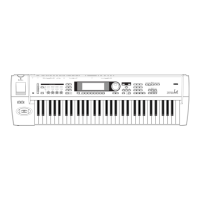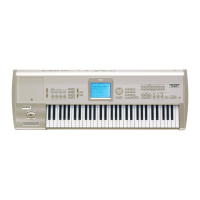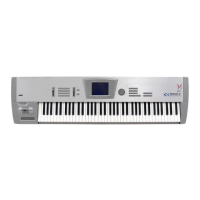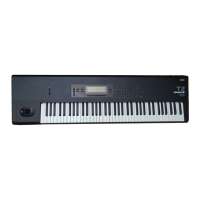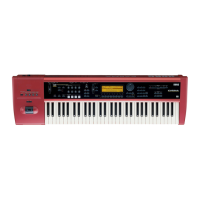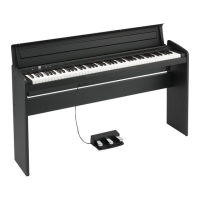v
Basic functions...........................41
Saving data.....................................41
Types of data that can be saved ......... 41
Writing to internal memory ................ 42
Writing a program or combination........... 42
Writing global settings, user drum kits, and
user arpeggio patterns............................ 44
Saving on external media................... 45
MIDI data dump................................. 46
Restoring the factory settings............47
Loading the preloaded data ............... 47
Program mode ................................48
How a program is organized.............. 48
Basic program editing........................ 48
Oscillator settings......................................... 49
Controller settings ....................................... 50
Pitch settings................................................. 50
Filter settings ................................................ 51
Amplifier settings ........................................ 53
LFO settings.................................................. 54
Arpeggiator settings.................................... 54
BUS settings.................................................. 54
Insert Effect settings .................................... 54
Master Effect settings .................................. 54
More about Alternate Modulation....... 55
Combination mode ..........................56
How a combination is organized ........ 56
Basic combination editing........................... 56
Timbre 1–8 program, pan and volume..... 57
Controller settings ....................................... 58
Settings for status, MIDI channel, and
playing mode........................................... 58
Note timing and scale settings................... 59
Layer and split settings............................... 59
Velocity switch settings .............................. 60
MIDI filter settings....................................... 60
Arpeggiator settings.................................... 60
Bus settings................................................... 60
Insert Effect settings .................................... 60
Master Effect settings .................................. 60
Sequencer mode.............................. 61
Features of the sequencer ...................61
The structure of Sequencer mode.........62
Songs..............................................................62
Patterns..........................................................62
Cue List..........................................................62
Producing a song ...............................63
Creating the basic song ...............................63
Song editing methods..................................69
Creating and playing a Cue List................71
Creating and recording RPPR (Realtime
Pattern Play/Record) ..........................73
Creating RPPR data .....................................73
RPPR playback .............................................74
Realtime-recording an RPPR
performance .............................................74
Recording the sounds of a
combination.......................................75
Caution and other functions in Sequencer
mode.................................................77
Recording on the TRITON Le................78
Recording a track,
and recording a pattern..........................78
Sampling mode............................... 82
Features of EXB-SMPL.........................82
How Sampling mode is organized.......83
In Sampling mode........................................83
Samples and Multisamples.........................83
Sampling ...........................................84
Preparations for sampling ..........................84
Manual sampling .........................................85
Auto sampling..............................................86
Creating multisample indexes and sampling
87
Loop settings......................................88
The grid display ...........................................88
Sample (waveform data) editing .........89
Multisample editing............................90
Editing the indices .......................................90
Modifying the settings of an index............90
Converting a multisample to a
program ............................................91
Using Time Slice to divide a sample, and
playing it in Sequencer mode..............91
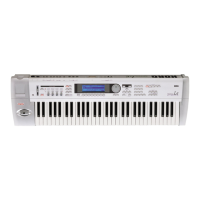
